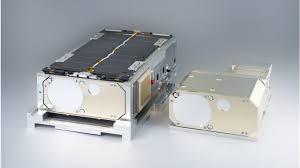Written by Mary Lennighan for Telecoms.com

The number of WiFi-enabled products shipped worldwide last year fell for the first time ever, according to new research from IDC.
However, it’s not all doom and gloom. While the market was naturally heavily impacted by weakness in the smartphone space, the analyst firm’s data suggests it will bounce back more quickly, driven by demand from IoT.
WiFi has been around for a while. And its popularity is only growing. As such, it’s newsworthy that the number of devices shipped with WiFi declined in 2022 to 3.8 billion, a fall of 4.9% on 2021. That’s the first decline in the technology’s “decades-long history,” IDC pointed out. That said, the slide is hardly a surprise.
As IDC notes, the decline comes on the back of falls in both the PC and smartphone markets, as well as being impacted by growth in 2021, when purchasing decisions were still being impacted by the Covid-19 pandemic. The number of WiFi-enabled device shipments that year grew by 8.6% on 2020.
But interestingly, the market looks set to be quicker on the rebound than both the PC and smartphone spaces, buoyed by the emergence of new product types. It will be a shade better than flat at 3.9 billion devices in 2023, IDC predicts, while 2024 will bring growth of 6.4% to 4.1 billion products. By way of comparison, it recently forecasted that the global smartphone market will shrink again this year, with no recovery until next, while we’re looking at double-digit quarterly declines in the PC market.
“The drop in WiFi shipments the market experienced in 2022 is unprecedented, caused by temporarily increased shipments of certain product types in 2021 and exacerbated by a drop in demand in the second half of 2022,” said Phil Solis, research director, Connectivity and Smartphone Semiconductors at IDC, in a statement accompanying the numbers. “There is all growth going forward layered with trends of more WiFi 6 and 6E devices coming into play, WiFi 7 chips ramping up in higher-end devices and access points, and more discrete WiFi solutions in primary client devices and other product types,” Solis said.
Indeed, IDC predicts that two-thirds of WiFi-enabled product shipments this year will be based on WiFi 6 or WiFi 6E – more bandwidth, faster latency and higher speeds – and crucially, these will continue to expand into more IoT devices, essentially because there will be more WiFi 6 chipsets targeting IoT devices hitting the market.
There will be eight different WiFi-enabled product types on the market this year that will each ship over 100 million units, IDC notes, the main ones still being smartphones, tablets and PCs, which will account for 40% of shipments. However, that magic 100 million shipments milestone will be reached by 11 different products categories in 2027 – just four years away – while several other device types will come close.
IoT accounted for 37% of the WiFi-enabled devices market last year, having surpassed smartphones in terms of market share in 2021, and will grow to 40% in 2027, by which time it will be the largest device category in the WiFi space.
Further proof, if it were needed, that IoT devices are changing the shape of the market… if you’re counting unit shipments.
Click here to read the original article.









